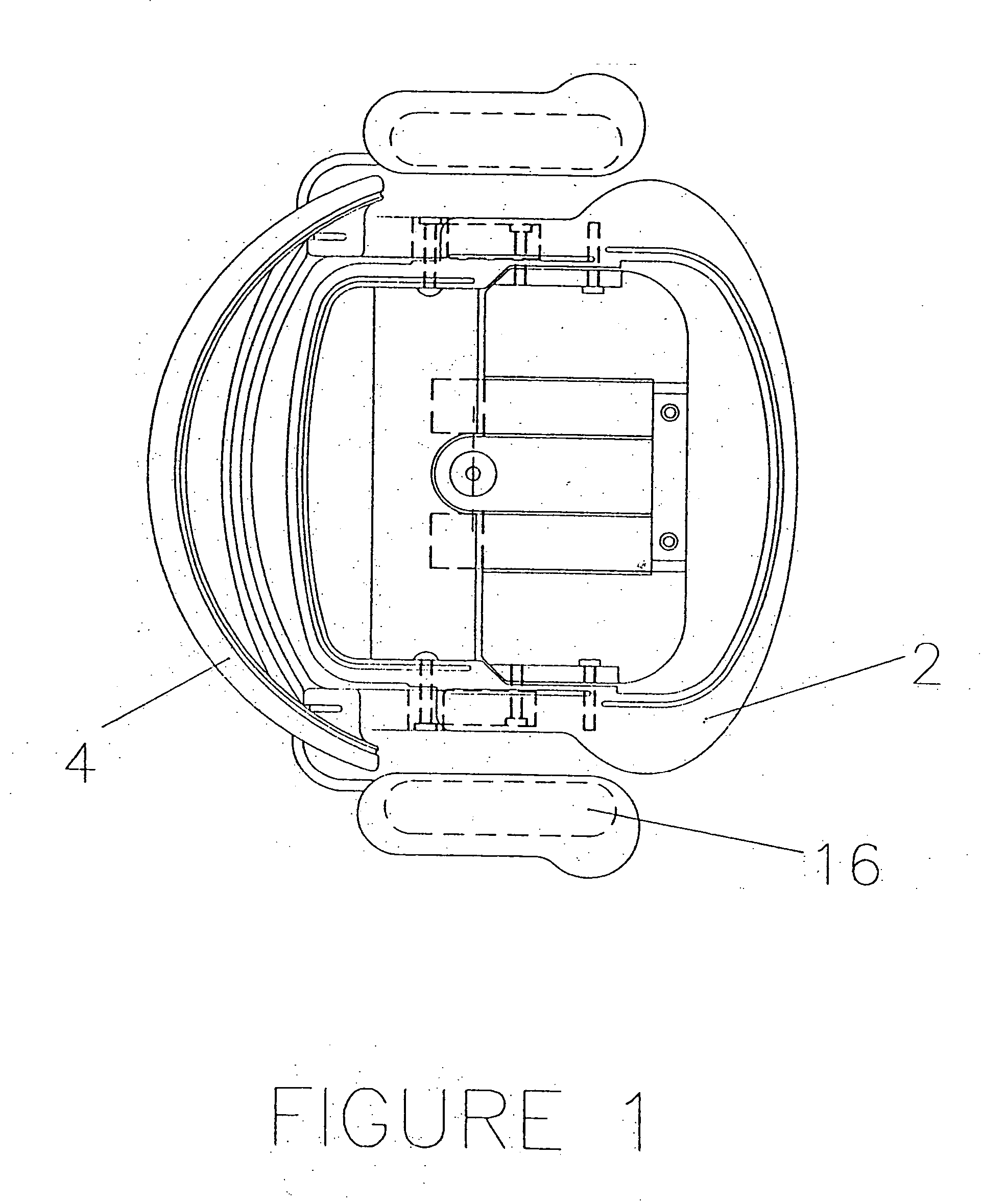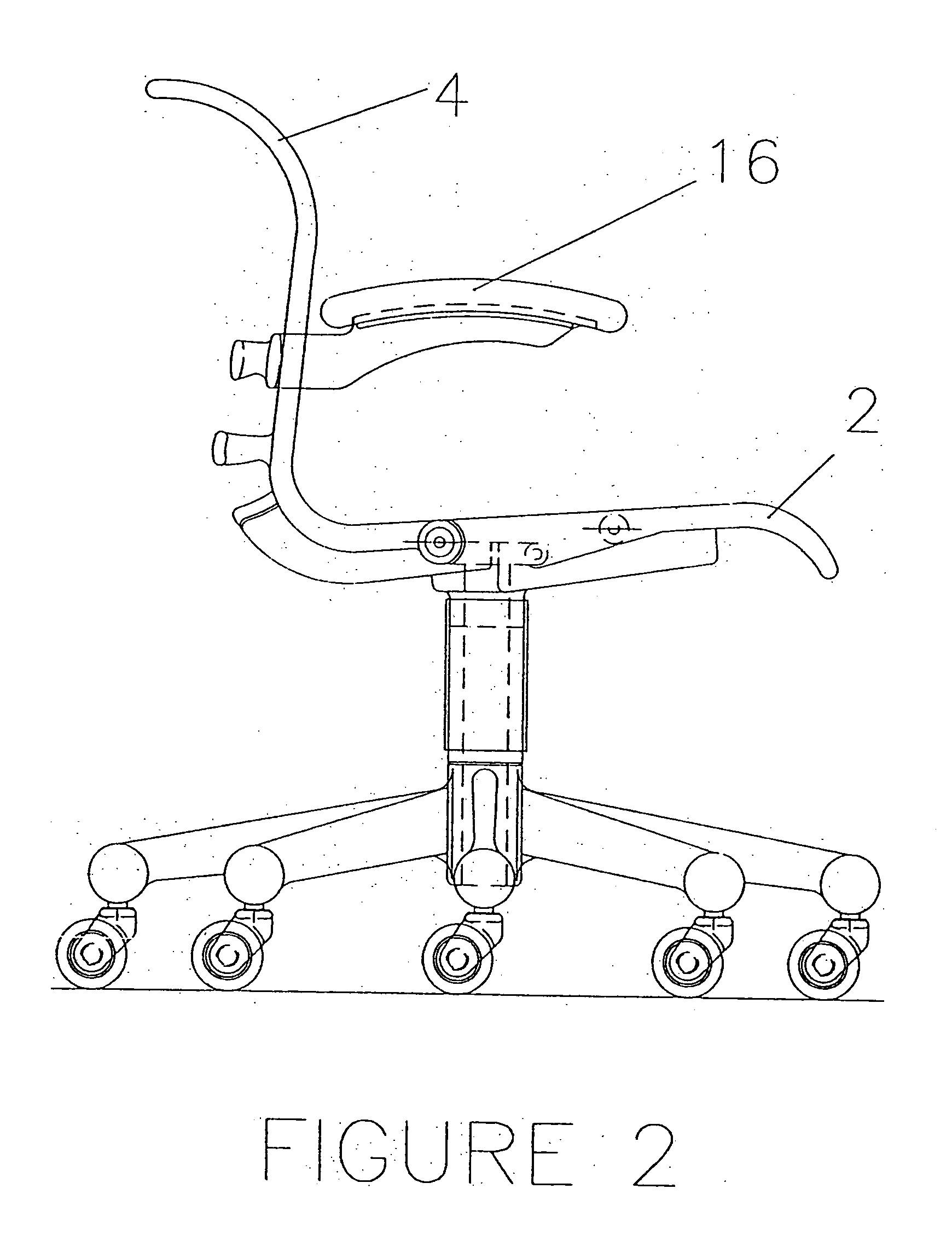Seating structure having flexible seating surface
a seating structure and flexible technology, applied in the field of chairs and seating, can solve the problems of excessive heat build-up between the seating surface and the occupant, difficult if not impossible to properly vary the firmness, and relatively inefficient process, and achieve the effects of superior surface adjustment, greater rigidity, and greater comfor
- Summary
- Abstract
- Description
- Claims
- Application Information
AI Technical Summary
Benefits of technology
Problems solved by technology
Method used
Image
Examples
Embodiment Construction
[0044] While the invention will be described in connection with a preferred embodiment, it will be understood that I do not intend to limit the invention to that embodiment. On the contrary, I intend to cover all alternatives, modifications and equivalents within the spirit and scope of the invention.
[0045] Referring to FIG. 10 a top view of the seat-pan seating surface and its support frame can be seen. And by referring to FIGS. 3-6, the shells or pans can be seen separate from the frames, and the frames can be seen separate from the seating surface shells or pans in FIGS. 1,2,7,8, and 9. Also, it should be noted that a separate peripheral support frame is not a necessity of the invention, for the shells could be self-supporting with an integral structure. Additionally for clarification, a seat-pan, or back-pan seating surface refers to a structure which may be the primary surface, as in a plastic or wood chair, or a structure which may accept foam and upholstery and thus not be t...
PUM
| Property | Measurement | Unit |
|---|---|---|
| seating structure | aaaaa | aaaaa |
| web structures | aaaaa | aaaaa |
| movement | aaaaa | aaaaa |
Abstract
Description
Claims
Application Information
 Login to View More
Login to View More - R&D
- Intellectual Property
- Life Sciences
- Materials
- Tech Scout
- Unparalleled Data Quality
- Higher Quality Content
- 60% Fewer Hallucinations
Browse by: Latest US Patents, China's latest patents, Technical Efficacy Thesaurus, Application Domain, Technology Topic, Popular Technical Reports.
© 2025 PatSnap. All rights reserved.Legal|Privacy policy|Modern Slavery Act Transparency Statement|Sitemap|About US| Contact US: help@patsnap.com



